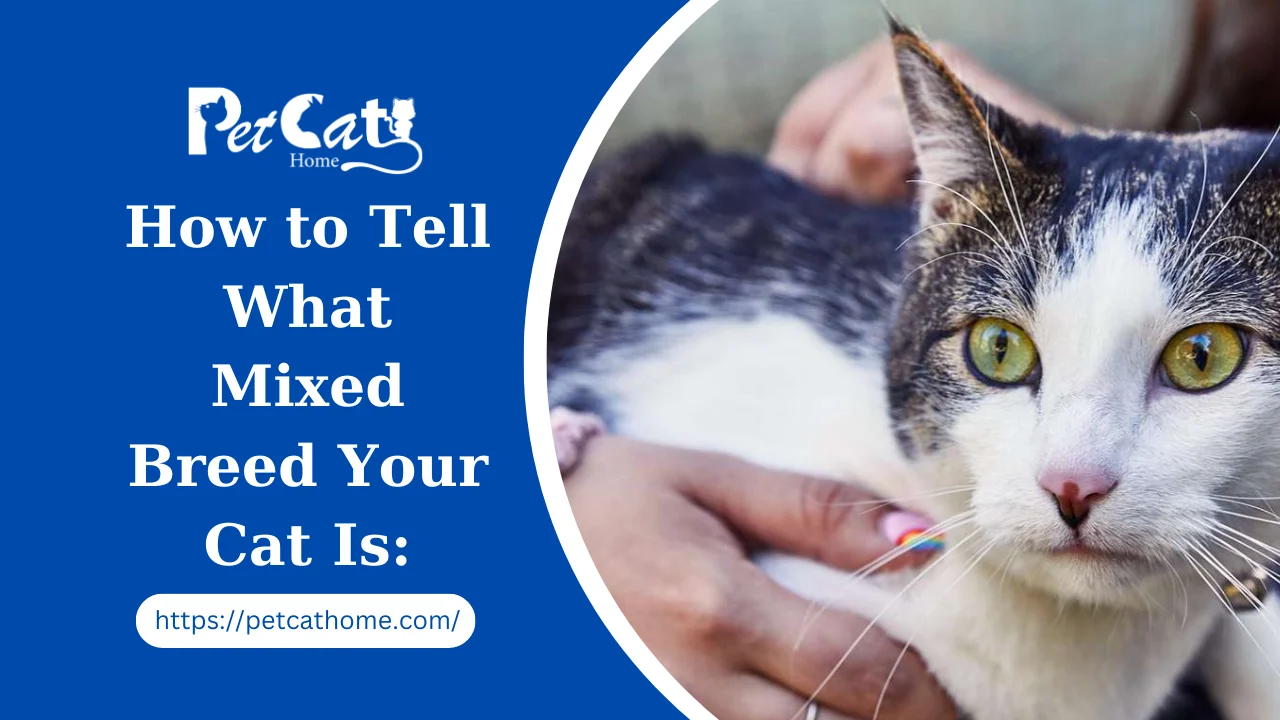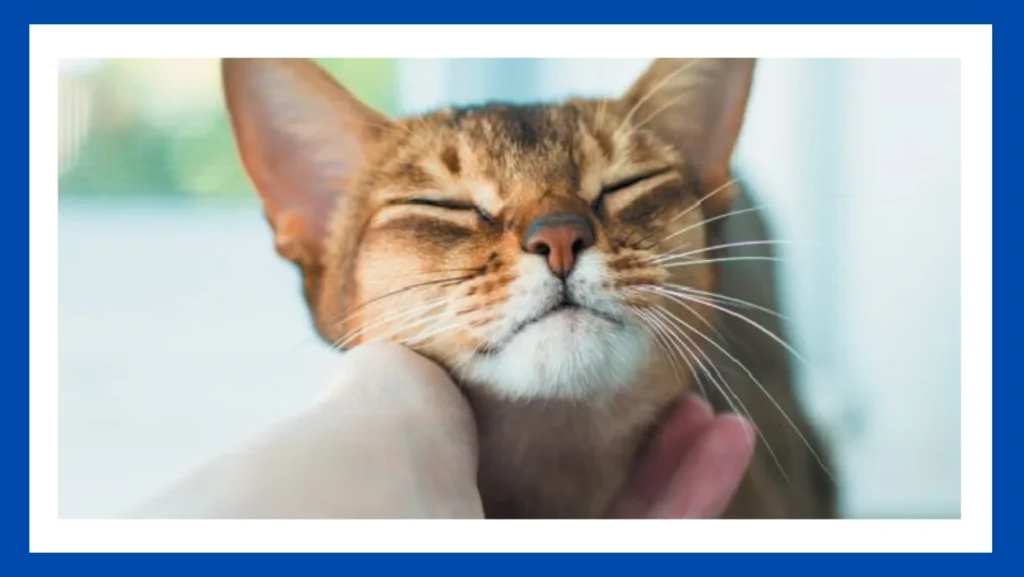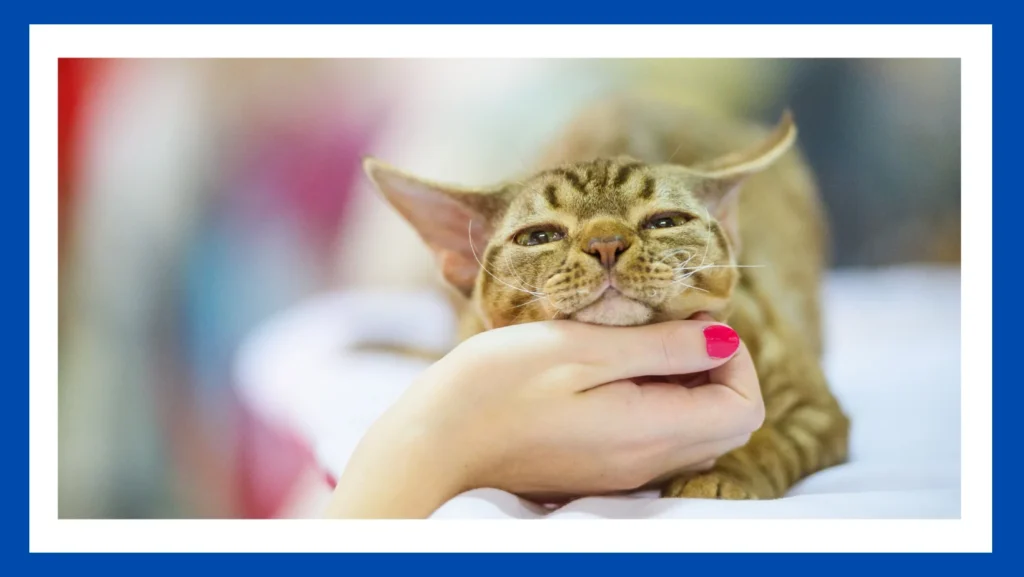How to Tell What Mixed Breed Your Cat Is:

Greetings from the exciting field of feline genetics! You’re not alone if you’ve ever pondered the enigmatic cross-breed combination that is your cherished cat. We’ll go over step-by-step techniques in this comprehensive tutorial to help you recognize and value your pet’s varied ancestry. Together, let’s go out on this fascinating adventure to learn how to identify the mixed breed of your cat.
Cracking the Genetic Code: Understanding Feline Ancestry
This section covers the fundamentals of feline genomics and shows how the genes that determine a cat’s look and traits are carried by a distinct mix in each cat. Determining the mixed breed status of your cat begins with an understanding of these genetic characteristics.
Physical Features: Clues to Your Cat’s Heritage
Learn how to read the physical characteristics of your cat to uncover clues about its origin as a mixed breed. Every feature, such as coat colours and patterns or unique markings, offers important hints that help piece together your cat’s ancestral history.
Behavioural Traits: Insight into Ancestral Instincts
Cats frequently display particular behavioural characteristics associated with their ancestry. We’ll walk you through the process of analyzing your cat’s behaviour, pointing out trends that suggest a certain breed and giving you information on its distinct inclinations and traits.
Eye on the Eyes: Decoding Genetic Markers
As the eyes are a gateway to the soul, we look at how your cat’s eyes can reveal something about its genetic composition in this part. Discover how to interpret the genetic markers that indicate a cat’s mixed breed ancestry and how to read the language of its eyes.
Paws and Claws: A Closer Look at Cat Feet

Unexpectedly, your cat’s feet and claws can reveal important information about its origins as a mixed breed. We’ll walk you through analyzing these frequently disregarded characteristics to find buried hints that add to the whole picture of your cat’s lineage.
Veterinary Insights: DNA Testing for Feline Ancestry
Modern veterinary laboratory testing offers a trustworthy way to determine your cat’s mixed breed heritage, for those who want a more scientific approach. Learn about the feline DNA testing procedure, advantages, and restrictions to have a better knowledge of your cat’s ancestry.
Common Mixed Breeds: Recognizing Popular Combinations
Some mixed breeds are more common than others. We’ll provide you with a summary of typical mixed-breed pairings so you can begin spotting important traits in you and your feline companion.
How To Tell What Breed A Cat Is
It’s not uncommon for people to have cats as family pets, so you’re not alone if you’ve ever asked what breed your kitty is. While the Cat Fanciers Alliance (CFA) recognizes 45 breeds, the International Cat Alliance (TICA) recognizes 73. That’s a huge variety of cat breeds, either way!
The native cats of their respective regions are the ancestors of the majority of modern cat breeds. Since cats are quite adept at warding off rodents, it is believed that when they got more domesticated thousands of ago ago, people and cats came to enjoy mutually beneficial interactions.
Modern cats are not as tamed as dogs are; although they can be loving at times, cats are still mostly independent and have the ability to hunt. Cats are a special part of people’s lives and continue to be beloved companions, from deities to popular depictions in literary and artistic works to the first kind of cloned pet.
Certain individuals choose their cats from breeders, having prior knowledge of the breed. However, a lot of people purchase from rescue organizations or pick up cats along the way and bring them into their homes. In this instance, determining your cat’s breed requires some research, particularly since the majority of cats are mixed breeds.
“More than 96% of cats worldwide are mixed-breed and not subject to controlled breeding, which means they select their partners,” states Dr. Mikel Maria He PhD, a Certified Cat Behavior Consultant. “Purebred cats are cats that humans have selectively bred for particular physical traits over some time.” Dr. Delgado points out that the gene pool is reduced by selective breeding, and it’s critical to understand the higher risks of specific health issues.
In the sections that follow, we examine the studies and speak with Dr. Delgado about the characteristics and indicators that can assist you in identifying your cat’s mixed breed—and the significance of this knowledge.
Eight Ways To Identify Your Cat’s Breed

How can you know what breed your cat is, given the variety available? The physical characteristics of the cat provide certain indicators that can assist in figuring this out. A person’s face shape, body type, fur colour, and length can all serve as telltale signs.
Size of your cat
The most typical size of cats is medium, meaning that they should weigh between four and seven kilograms. Small breeds (weighing less than four kilograms) and giant breeds (weighing more than seven kilograms) do exist, however, they are less prevalent.
Here are a few cat mixed breed samples in each of the three size categories.
Cat Size
- Small or dwarf sized: (<4kg/10 pounds) Singapura, Munchkin, Napoleon, Bambino, American Curl, Balinese, Cornish Rex, Japanese Bobtail
- Medium-sized cats: (4-7kg (10-15 pounds) Siamese, Burmese, Abyssinian, American Shorthair, Russian Blue, Ocicat, Manx, Sphynx, Korat, American Wirehair, Chartreux, Scottish Fold
- Large cats: (7kg(15 pounds)>) Maine Coon, Ragamuffin, Savannah Cat, Chausie, Siberian, Norwegian Forest Cat
Fur colours and patterns
Fur colour, patterns, and markings can vary greatly, however, some of these traits can be used to identify particular breeds. Nonetheless, patterns can be observed in mixed or pure breeds as well as in several breeds. Solid black, grey, or white/cream; bi-colours like tuxedo, tabby, and harlequin; tortoiseshell; and calico are among the colours and combinations you’ll frequently see.
Here are some illustrations of cat mixed breeds with various coat patterns. Once more, breeds often overlap, so even though this can help you narrow it down, other characteristics might be more useful in identifying the kind of cat you have.
Cat fur colour or markings
- Solid colour: Siberian, Russian Blue, Bombay, Persian
- Bi-colour: Maine Coon, Manx, Exotic Shorthair, Cornish Rex, Turkish Van, British Shorthair, Cymric
- Tortoiseshell: American Shorthair, British Shorthair, Japanese Bobtail, Cornish Rex
- Calico: Manx, American Shorthair, Persian, Devon Rex, Scottish Fold, Arabian Mau, Japanese Bobtail, Cornish Rex
- Points: Siamese, Tonkinese, Birman, Himalayan, Balinese, Snowshoe
Hair length and patterns
Cats have a variety of fur textures and lengths in addition to distinct colouring and patterns. Cats can have four primary types of coats: hairless, curly, short, and long. Given that certain coat types—like long hair—are the product of recessive genes and certain mutations—like curly and hairless—the type of fur on your cat may serve as a useful breed identifier.
Fur type
- Long hair: Persian, Birman, Himalayan, Japanese Bobtail, Maine Coon, Ragamuffin, Turkish Angora, Siberian
- Short hair: American Shorthair, Abyssinian, Manx, Russian Blue, Bengal, Siamese
- Curly hair: LaPerm, American Wirehair, Cornish Rex, Selkirk Rex, Devon Rex
- No hair: Sphynx, Peterbald, Donskoy, Bambino, Elf
Face shape
Unless a cat breed has a flat or narrow face, it is less frequent to recognize them by their facial shape. The Persian, Munchkin, Scottish Fold, Exotic Shorthair, and Selkirk Rex are among the breeds of cats with flat faces. Siamese, Cornish Rex, and Abyssinian cats all have narrow faces.
Bear in mind that cats with flat faces, or brachycephalic mixed breeds, are more vulnerable to certain health issues. According to Dr. Delgado, “These health problems include breathing problems, dental disease, and Chiari abnormalities (cavities in the spinal cord near the skull).” “Persian cats are also at more risk than other cats for polycystic kidney disease due to the limited gene pool from inbreeding.”
Tail length
Tails are a typical feature used to identify a specific breed of cat, however, most breeds are similar enough that it would be difficult to tell them apart.
Short tails, however, help identify specific breeds. Several popular domestic cat breeds with tails that are short include the American Bobtail, Highlander, Japanese Bobtail, Manx, American Lynx, and Cymric.
Ear shape and features
Your cat’s ears could reveal to you what breed they are because some ear characteristics are unique. Ear tufts and furnishings are divided into three distinct categories: curled, folded, and furnishings.
It’s crucial to remember that cats who have folded or curled ears may have specific health problems. Scottish Folds, for instance, are afflicted with osteochondrodysplasia, a cartilage anomaly that impairs bone formation and eventually results in severe arthritis. Furthermore, cats with curled ears—like the American Curl—may find it difficult to clean them or may sustain ear injury and poor health more frequently.
Below are some examples of cat breeds with distinct ears.
Behaviour and Personality
Like people, cats have distinct personalities. Dr. Delgado asserts, “There isn’t a lot of compelling evidence that cats are raised for personality.” Nonetheless, a 2019 study published in Scientific Reports discovered that, in a regulated setting, breed variations existed in 19 breed groups’ social and non-social behaviours. The results include observations that the British Shorthair, Ragdoll, Persian, Norwegian Forest Cat, and Saint Birman cats are the least aggressive, while the Korat and Devon Rex are the most prone to seek human contact.
To more firmly demonstrate a relationship between breed and personality, more research is required.
What Breed is My Cat? At-Home Tools

Are you still unsure of the breed of your cat? The following resources could be useful:
- Applications like Cat Scanner allow you to quickly determine the breed of your cat—even mixed breeds—by taking or uploading a picture or video.
- If you’re thinking about becoming a cat parent, you may use online quizzes to help your family narrow down the breed of your cat or even determine which breeds are a good fit for you.
- Do you want additional assurance? Select for DNA testing. In particular, Dr. Delgado like Basepaws.
- Speak with your veterinarian.
What Breed is My Cat? Takeaway
Your cat’s mixed breed can be determined by looking at a variety of physical characteristics, including size, colour, ears, fur type, and possibly even the shape of their face and tail. Although they could be indicators, eyes and specific personality qualities are not as trustworthy for identification.
It’s crucial to do your homework and find out about any potential ailments or related health issues, especially if you’ve welcomed or intend to welcome a purebreed cat into your home.
Dr. Delgado adds, “Knowing your cat’s genetic composition can be interesting. DNA testing can also determine whether your cat is a carrier or more susceptible to certain diseases.”
What Breed Is My Cat? A Guide To Identifying Your Cat’s Breed
One of the most often inquiries cat owners ask me is what breed their cat is. Just by looking at your cat, I can get a pretty good idea of his genetic background, however, I can’t be 100% certain without a DNA test. I’m going to share with you my years of cat knowledge today and ask you to try to determine the breed of your cat based on a few distinguishing characteristics. Size, colour, pattern, coat type, face shape, tail length, and even behaviour are examples of cat breed characteristics.
For years I believed my beautiful cat to be a basic tuxedo. Things didn’t get interesting until the year he went for his yearly shots and the veterinarian called him a black and white tabby. Because if you look very closely, my regular cat has tabby stripes in his coat. Although there isn’t much practical value for this information, it is interesting to consider his genetic makeup and the potential causes of that peculiarity. Maybe the breed, or breeds, that came before him hold the key to the solution?
We’ll assist you in determining which of the several cat species your kitten falls into in this post. Providing a wealth of knowledge about the telltale symptoms of many cat breeds. A few things to consider are face form, tail length, colour and pattern of the fur, and more! Discover the answer to the query, “What breed is my cat?” by reading on!
What Breed Is My Cat?
There are methods for determining your cat’s breed at home, even though DNA testing can now distinguish between a few of the more popular combinations. Today, we’ll examine the characteristics—such as size, pattern, coat, form, and even behaviour—that are most likely to provide the best indication of type.
Before joining your family, your cat can have been a stray, a gift, or a rescue. For whatever reason, you’re interested in learning how to identify the breed of your cat. Breeds of kittens vary greatly from one another in many respects. These characteristics allow us to recognize specific cats.
Purebred or Mixed?
Kittens that have only one breed of ancestry are known as purebred cats. As a result, they frequently have traits in common that meet the requirements of their breed. which greatly facilitates their identification! However, not every common cat breed is purebred.
Conversely, traits from any of their parent breeds can be inherited by mixed breeds. which can make it challenging to recognize them. Mixed-breed puppies from the same litter might have rather distinct appearances. The best strategy to reduce your alternatives is to focus on the aspects we just highlighted.
Cat Breeds By Size
Your cat’s size is one of the primary indicators of its breed. You can reduce your selections by determining whether your kitten belongs to a large or tiny cat breed. However, it’s crucial to keep in mind that kittens of all breeds can have a range of sizes. Therefore, especially if your cat is a mixed breed, size isn’t always a reliable indicator of breed.
Large Cat Breeds
Weight ranges for large cat breeds are 10 to 25 pounds. Even though some people weigh up to 30 pounds! Large cat breeds vary in appearance. Among the most popular breeds of domestic cats are:
- Ragdoll
- Maine Coon
- Norwegian Forest
- Burmese
- Bengal
- Egyptian Mau
- Savannah
Small Cat Breeds
Similar to their more voluminous siblings, little cat breeds can differ greatly in appearance. However, they are all of a similar petite size, seldom weighing more than fifteen pounds.
- Cornish Rex
- American Curl
- Singapura
How to Tell What Mixed Breed Your Cat Is:
FAQs
How reliable are DNA tests for determining the mixed breed of a cat?
The mixed breed heritage of a cat can be determined with great accuracy using DNA testing. It is imperative to take into account the constraints and possible discrepancies in outcomes.
Can I tell the mixed breed of my cat only by looking at its physical characteristics?
Even though physical characteristics might give important hints, a thorough analysis that takes into account behaviour, genetics, and occasionally DNA testing can yield a more precise identification.
Are some mixed breeds frequent concerning particular traits?
While certain mixed breeds may have similar characteristics, individual differences may still occur. Accurate identification requires observing a mix of features.
Conclusion
Well done on making it through the difficult process of figuring out your cat’s mixed breed! Now that you’ve gained an understanding of genetics, morphology, behaviour, and historical background, you may begin to solve the puzzle of your feline friend’s origins. Accept the special qualities that set your mixed-breed cat apart and treasure the many influences that have shaped them.





